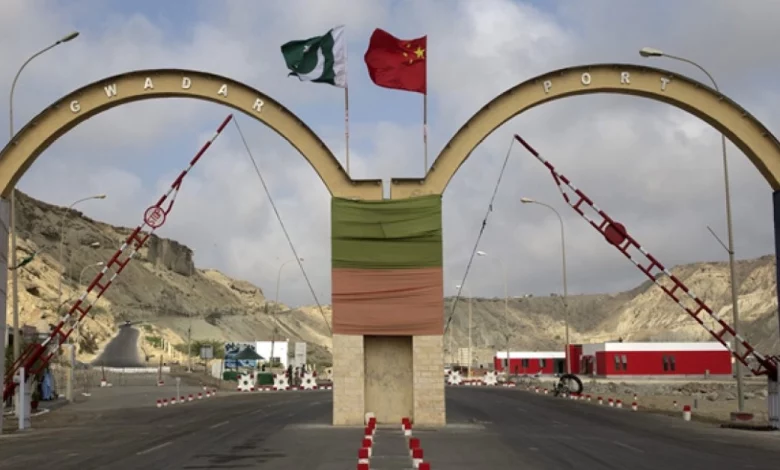China’s J 35A Has Provided Iron Shield to CPEC
In a development that has stunned Western observers and forced doctrinal recalibration across South Asia, China and Pakistan have jointly test-flown the first Pakistan-liveried J-35A ‘Gyrfalcon’ stealth fighter over the Karakoram. The flight was carried out with Chinese and Pakistani pilots aboard, fully integrated with Beidou satellite command, AWACS uplink, and ground-based stealth-tracking denial systems.
- China’s J 35A Has Provided Iron Shield to CPEC
- A Stealth Jet—and A Strategic Message
- CPEC is No Longer Just A Road — It’s A Shield
But this wasn’t just a test of technology—it was a demonstration of trust.
It marked a transformation of Pakistan’s role from a tactical partner to a privileged strategic ally—one now privy to China’s most advanced combat doctrine.
“This isn’t just cooperation. It’s a full-spectrum fusion.”
A senior European defense attaché based in Islamabad told us on background:
“We knew the J-35 would be exported. But we didn’t expect Pakistani pilots to be inside the cockpit before full PLAAF deployment.
That’s unprecedented. This isn’t just cooperation. It’s full-spectrum fusion.”
According to multiple military observers, the J-35A flights over Gilgit-Baltistan were not simulations.
They were high-fidelity integration drills, including:
1. Real-time radar suppression exercises.
2. Satellite-guided targeting against virtual enemy airframes.
3. Live interception of AWACS and low-observable drone targets.
4. Simulated Rafale/Meteor scenario tracking.
5. These were not “orientation flights” They were doctrinal rehearsals.
A Stealth Jet—and A Strategic Message

A former Indian Air Marshal, speaking anonymously to a UK-based defense publication, admitted:
“If Chinese and Pakistani pilots are flying J-35As in combat configurations, it fundamentally changes the balance. The Rafale edge we built is gone. Stealth has reached our borders.”
The J-35A is China’s answer to the F-35, and the fact that it’s being tested in Pakistani airspace under joint command is a clear message to both India and the West:
China trusts no one more than Pakistan with its crown jewel.
Why This Is a Strategic First?
While Russia has exported Su-35s and is co-developing Su-75, it has not integrated any ally into its core fifth-generation doctrine. Nor has the U.S. allowed any non-NATO state full access to F-35 flight protocols.
China just did.
According to a Chinese defense analyst quoted in Global Times:
“Pakistan is not just a customer. It is a doctrinal partner. The J-35’s deployment tests reflect the maturing of a joint deterrence framework.”
What Does This Mean for the Region?
India’s Rafale-Meteor doctrine is now under question.
The assumption of BVR superiority is neutralized by PL-15E range parity and J-35’s radar evasion.
China has field-tested integrated battle cloud architecture in South Asia.
This means AWACS, satellites, and stealth jets in unified command, with Pakistani coordination.
CPEC is No Longer Just A Road — It’s A Shield

With Gilgit-Baltistan becoming an aerial bastion, Chinese stealth can now dominate Siachen-Galwan axis if needed.
“We’re Inside the System Now” A retired PAF Air Commodore, familiar with the test protocols, put it bluntly:
“This isn’t just about receiving jets. It’s about being inside the operating system. We’re no longer flying Chinese jets—we’re flying with China, in China’s future.”
With the J-35A, Pakistan hasn’t just closed the gap.
It has entered the command structure of the next global aerial paradigm.
Pakistan-China Friendship Has Now Transformed Into A Strategic Fusion
View this development with China’s production of a high-altitude flying new plane firing one hundred drones at a time; and a non-nuclear fusion bomb, which China claims, can decimate the US military might in the seas around China in two seconds.
Do take into account China’s intentions to absorb Taiwan, and to integrate Ladakh and Arunachal Pradesh (southern Tibet) into its mainland. China is building the largest dam in the world in that area from where, as an uparian, it can control the flow of all the six rivers into IOK and Pakistan, as well as major rivers into India and BD.
Yet another development is the issuance of a new map of Greater Bengal, which envisages the landlocked seven sister states in NE India, as part of Bangladesh (BD).
The insurgency prone seven states are enveloped from two directions by BD and China. The Siliguri corridor and the chicken neck are within the grasping reach of China from Sikkim and Doklam, where China has built an airfield.



